Meivys Páez Paredes2
Kong Xu1
Translated from the original in Spanish
Original article
ICT in the Intensive Spanish subject: diagnosis in a Chinese university
Las TIC en la asignatura de Español Intensivo: diagnóstico en una universidad china
TIC na disciplina de espanhol intensivo: diagnóstico em uma universidade chinesa
Qiu Qinghua1![]() https://orcid.org/0000-0003-3219-6389
https://orcid.org/0000-0003-3219-6389
Meivys Páez
Paredes2![]() http://orcid.org/0000-0001-5325-1004
http://orcid.org/0000-0001-5325-1004
Kong Xu1![]() http://orcid.org/0000-0001-9122-8171
http://orcid.org/0000-0001-9122-8171
1Linyi University. China.
![]() qqhls0539@163.com
qqhls0539@163.com
2University of Pinar del Río "Hermanos Saíz Montes de Oca". Cuba.
![]() meivys@upr.edu.cu
meivys@upr.edu.cu
| Qinghua, Q., Páez Paredes, M., Xu, K. (2024). ICT in the Intensive Spanish subject: diagnosis in a Chinese university. Mendive. Journal of Education, 22(1), e3622. https://mendive.upr.edu.cu/index.php/MendiveUPR/article/view/3622 |
Received: August 16, 2023
Accepted: December 19, 2023
ABSTRACT
The appropriate integration of information and communication technologies into the curriculum contributes to achieving high-quality education. Both the international community and the Chinese government have launched various policies and actions to promote the integration of information and communication technologies in education. This research was motivated by the improvement of the integration of information and communication technologies in the curriculum of Intensive Spanish at Linyi University, so its objective is to diagnose the current state of this integration process. Based on a Materialist Dialectical approach, this research used quantitative and qualitative research methods and techniques. A survey was applied to 107 students who had participated in the curriculum of Intensive Spanish and to 5 teachers who had taught this curriculum. The results show that the integration of information and communication technologies in the curriculum of Intensive Spanish at Linyi University still shows limitations in the creation of the computerized teaching-learning environment, the application of new ways of teaching-learning, and the transformation of the traditional teaching-learning structure of Spanish. Thus, the need and direction for improving the integration of information and communication technologies in the curriculum of Intensive Spanish at Linyi University was concluded in order to improve the quality of teaching and learning of Spanish.
Keywords: ICT; language teaching; foreign language; Intensive Spanish; China.
RESUMEN
La integración adecuada de las tecnologías de la información y la comunicación en las asignaturas contribuye a lograr una educación de alta calidad. Tanto la comunidad internacional como el gobierno chino lanzaron diversas políticas y acciones para promover la integración de las tecnologías de la información y la comunicación en la educación. Esta investigación estuvo motivada por el mejoramiento de la integración de las tecnologías de la información y la comunicación en la asignatura de Español Intensivo en la Universidad de Linyi, por lo que se plantea como objetivo, diagnosticar el estado actual de este proceso de integración. Basándose en un enfoque Dialéctico Materialista, esta investigación utilizó métodos y técnicas de investigación de naturaleza cuantitativa y cualitativa. Se aplicó una encuesta a 107 estudiantes que habían participado en la asignatura de Español Intensivo y a 5 docentes que les habían dado clases de esta asignatura. Los resultados demuestran que la integración de las tecnologías de la información y la comunicación en la asignatura de Español Intensivo en la Universidad de Linyi aún manifiesta limitaciones en la creación del entorno informatizado de enseñanza-aprendizaje, la aplicación de nuevas maneras de enseñanza-aprendizaje, y la transformación de la tradicional estructura de enseñanza-aprendizaje del español. Así se concluyó la necesidad y dirección del mejoramiento de la integración de las tecnologías de la información y la comunicación en la asignatura de Español Intensivo en la Universidad de Linyi a fin de mejorar la calidad de enseñanza y aprendizaje del español.
Palabras clave: TIC; enseñanza de idiomas; lengua extranjera; Español Intensivo; China.
RESUMO
A integração adequada das tecnologias de informação e comunicação nas disciplinas contribui para alcançar uma educação de alta qualidade. Tanto a comunidade internacional como o governo chinês lançaram diversas políticas e ações para promover a integração das tecnologias de informação e comunicação na educação. Esta pesquisa foi motivada pela melhoria da integração das tecnologias de informação e comunicação na disciplina de espanhol intensivo da Universidade de Linyi, portanto o objetivo é diagnosticar o estado atual deste processo de integração. Baseada numa abordagem Materialista Dialética, esta pesquisa utilizou métodos e técnicas de pesquisa de natureza quantitativa e qualitativa. Uma pesquisa foi aplicada a 107 alunos que participaram da disciplina Intensiva de Espanhol e a 5 professores que lhes ministraram esta disciplina. Os resultados mostram que a integração das tecnologias de informação e comunicação na disciplina de espanhol intensivo da Universidade de Linyi ainda manifesta limitações na criação do ambiente informatizado de ensino-aprendizagem, na aplicação de novas formas de ensino-aprendizagem e na transformação do ensino tradicional. -estrutura de aprendizagem do espanhol. Assim, concluiu-se a necessidade e o direcionamento de melhorar a integração das tecnologias de informação e comunicação na disciplina de Espanhol Intensivo da Universidade de Linyi, a fim de melhorar a qualidade do ensino e da aprendizagem do espanhol.
Palavras-chave: TIC; Ensino de línguas; língua estrangeira; Espanhol Intensivo; China.
INTRODUCTION
Information and communication technologies (ICT) can benefit student learning when teachers know how to integrate them into the subject (UNESCO IIEP, 2023). To achieve high-quality education, many countries or organizations have already launched different policies or actions, to which China also attaches great importance by proposing the Strategic Action of Digitalization of Education (Ministry of Education of China, 2022) and has developed the National Platform for Public Services of Intelligent Education.
The Didactic Guide for Spanish courses at universities also demands that students develop the ability to use modern ICT to study, exchange ideas and carry out scientific research activities (National Steering Subcommittee on Spanish Teaching in Institutes and Universities of the Ministry of Education of China, 2022). The international and national emphasis shows the importance and need to integrate ICT in the teaching-learning of the Spanish language.
The core of the digital transformation of higher education is the subject and teaching (Unesco & Tsinghua University, 2022). The Intensive Spanish subject aims to cultivate and improve the comprehensive linguistic capacity of students, through combining the teaching of basic knowledge and the practice of basic skills (Steering Committee for Teaching of the Spanish Course of Universities of the Ministry of Education, 2022). As a core subject, it plays a key role in the digital transformation of the Spanish course.
Linyi University, through an initial exploratory study, It can be confirmed that there are still insufficiencies in the integration of ICT in the Intensive Spanish subject, so to improve this reality, the objective is proposed to diagnose the current state of this integration process.
MATERIALS AND METHODS
The work consists of carrying out an empirical diagnosis on the integration of ICT in the Intensive Spanish subject at Linyi University. For the diagnosis, the questionnaire was used that was built from the determination of dimensions and indicators. (Table 1)
Regarding the definition of the integration of ICT in subjects, there are several versions, among which the one given by He Kekang (He & Wu, 2019) is widely recognized in China, therefore, based on this, the study defines the integration of ICT in the Intensive Spanish subject as: using ICT to create an ideal computerized teaching-learning environment of Spanish, and achieving a new way of teaching and learning Spanish characterized by "autonomy, personalization and exploration " with which it can not only play the leadership role of Spanish teachers, but can also reflect the leading role of Spanish students completely, in order to carry out the fundamental transformation of the traditional teaching-learning structure of Spanish that places teacher as the center.
According to this definition, three aspects can be declared: creation of the computerized teaching-learning environment of Spanish, application of new ways of teaching-learning Spanish, and transformation of the traditional teaching-learning structure of Spanish.
Dimension 1. Creation of the computerized teaching-learning environment of Spanish
The creation of the computerized Spanish teaching-learning environment is the basis for the integration of ICT in the Intensive Spanish subject, which provides direct technological support to implement new ways of teaching-learning Spanish, and refers mainly to the construction and use of the computerized environment of the Spanish teaching-learning process. The computerized environment consists of two parts: the physical and the virtual. The physical refers to the environmental infrastructure, such as the university network, teaching-learning places and teaching-learning devices, etc. The virtual environment refers to the non-physical environment, such as teaching-learning resources, teaching platforms, exchange platforms and school policy guidance, etc.
Dimension 2. Application of new ways of teaching and learning Spanish
The new ways of teaching and learning Spanish are the key basis for transforming the structure of teaching-learning of Spanish, referring to using ICT to support students to carry out autonomous and personalized learning, reflecting the leading role of the students. of foreign languages, meanwhile, improve the computerization preparation of teachers and help them carry out precise teaching, flipped classroom and blended teaching, making them fully play the leadership role of Spanish teachers, in order to provide pedagogical support to achieve the new teaching-learning structure of Spanish where teachers are dominant and students are protagonists.
Dimension 3. Transformation of the traditional teaching-learning structure of Spanish
The specific content of transforming the traditional foreign language teaching-learning structure is to change the position and role of the four elements of the teaching-learning system (teacher, student, content and teaching-learning means), in order to realize the new teaching-learning structure of "dominant-protagonist" where they reflect not only the leadership role of the teachers, but also the protagonist position of the students.
Table 1- Dimensions and indicators
Dimensions |
Indicators |
1. Creation of the computerized Spanish teaching-learning environment |
1.1 University network status |
1.2 Construction and use of teaching-learning environments |
|
1.3 Equipment and use of teaching-learning devices |
|
1.4 Development and use of teaching-learning resources |
|
1.5 Development and use of teaching-learning platforms |
|
1.6 Construction and use of communication platforms |
|
1.7 School policy guidance |
|
2. Application of new ways of teaching and learning Spanish |
2.1 State of the autonomous learning that is carried out |
2.2 Status of personalized learning carried out |
|
2.3 Situation of implementing precise teaching |
|
2.4 Situation of implementing the flipped classroom |
|
2.5 Situation of implementing mixed teaching |
|
2.6 Teachers' computerization preparation situation |
|
2.7 Status of inclusion of information technology in the curriculum |
|
3. Transformation of the traditional teaching-learning structure of Spanish |
3.1 The position and role of teachers |
3.2 The position and role of students |
|
3.3 The position and role of teaching-learning content |
|
3.4 The position and role of teaching-learning media |
The research population consisted of 7 teachers and 138 Chinese students studying Spanish at Linyi University . From the total population, two sample units were selected, which were made up of: 107 students (31 from 2nd year, 41 from 3rd year and 35 from 4th year) who had received the Intensive Spanish subject, and 5 teachers who had taught them classes on it. The students were selected in a simple random way, while the teachers were selected intentionally.
RESULTS
Through the analysis of the collected questionnaires, the results of the indicators were achieved, shown below:
Indicator 1.1 State of the university network.
This indicator has three related elements: coverage, speed and stability. For the places that had coverage, more than 94% students selected the dormitory, while more than 73% selected the classroom, which occupies last. For teachers, what everyone selected was the office, and then the classroom (80%) and the campus (80%). Regarding the speed and stability of the university network, the students considered that the dormitories (3.54) had the best speed and stability, meanwhile, in the classroom, the worst (3.27). And for teachers, in the offices, the best (3.8), while in the classrooms, the worst (2.0).
Furthermore, in the places with the best speed and stability on the university network, the points do not exceed 4, which indicates that the speed and stability are not good enough.
Indicator 1.2 Construction and use of teaching-learning places.
In the question about the classrooms provided by the university, 80% of the teachers selected that there were ordinary classrooms, while all of them selected that there were multimedia classrooms, language laboratories and smart classrooms, but regarding the virtual simulation laboratory, no one selected it. . Regarding the use of these classrooms, the most selected were multimedia classrooms (3.6) and ordinary classrooms (3.5), and smart classrooms (1.4) and language laboratories (1.0) were used very infrequently.
Indicator 1.3 Equipment and use of teaching-learning devices.
The devices that the majority of students own are mobile phones (100%) and computers (94.12%), more than half have tablets (56.86%) and some have other devices such as electronic dictionary (10.78%) and Mp3/Mp4 /Mp5 (3.92%).
Regarding the frequency of use of the devices, it is seen that the most selected is the mobile phone (4.10), then the computer (2.71) and the tablet (2.34), and the electronic dictionary is used very little (0.50). and Mp3/Mp4/Mp5 (0.09).
Indicator 1.4 Development and use of teaching-learning resources.
According to the students, the most owned resource is the learning APP, but the percentage of them is not more than 80%. The least used resource is video courses, although YouTube videos are added, the number of students who have such resources still does not reach half. This indicates that students do not have enough resources closer to their context, and the resources they do have focus on the traditional type, such as PPTs and audios.
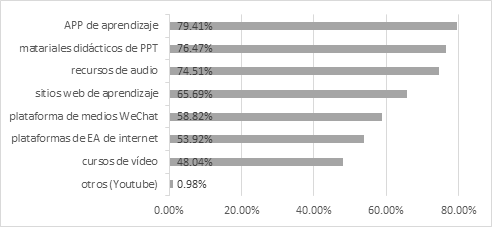
Fig. 1- Ranking of the learning resources that students have
These problems can also be reflected in Figure 2, in which the first three difficulties for students have to do with resources. And the problem of the amount of learning resources, although it does not occupy the first three positions, there are enough students who selected it, which is close to 40%.
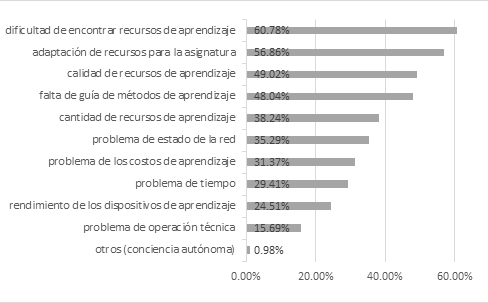
Fig. 2- Ranking of the difficulties that prevent students from using ICT to learn Spanish
In terms of frequency of use, all learning resources have a grade higher than 3.0, but none have a grade greater than or close to 4.0, and the grade for video courses also occupies the last position.
For teachers, the resources that they most frequently offer or require students to use are PPT materials (3.75) and audio resources (3.55), and other types of resources, with grades less than 3.0. This may be due to the lack of adequate resources for the subject, as in figure 3.
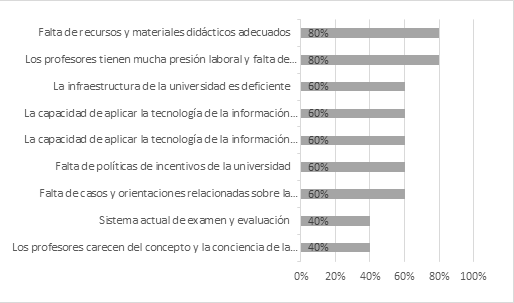
Fig. 3 - Ranking of the difficulties that prevent teachers from deeply integrating ICT in the Intensive Spanish subject
Furthermore, regarding the objective of using video courses (Figure 4), both teachers and students use them mainly to acquire more linguistic and cultural knowledge, less for learning subject knowledge.
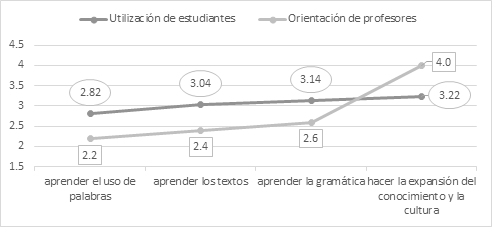
Fig. 4- Situation of use and orientation of video resources
Indicator 1.5 Development and use of teaching-learning platforms.
According to the survey, only 53.92% of students are equipped with online teaching-learning platforms, and the frequency score of all learning activities does not exceed 3.0, while the frequency score of students' orientations teachers is even lower.
Regarding the use of online teaching-learning platforms to carry out the teaching of the Intensive Spanish subject, the survey shows that social platforms are most used (4.2), such as DingTalk , WeChat, etc., followed by the RainClassroom platform (3.2), and the least used are Chaoxing (2.0), University Curriculum Center Platform (2.0), MOOC Platform (1.8), and Cloud Classroom (1.4).
Indicator 1.6 Construction and use of communication platforms.
The survey shows that students, through social platforms, communicate most with teachers (3.62), then with other Spanish students (3.21) and, finally, with Spanish speakers (2.66).
Indicator 1.7 School policy orientation.
According to the survey, 60% of professors state that they do not know if the university has guidance policies on educational computerization. At the same time, the figure shows that 60% of teachers believe that the lack of incentive policies at the university hinders the deep integration of ICT in the Intensive Spanish subject.
Regarding the frequency of trainings, observations, seminars and other activities related to the application of ICT organized by the university in the last three years, 40% of teachers chose "Many times", 20% chose "A times" and 40% chose "Rarely." Meanwhile, figure 3 shows that 60% of teachers believe that the lack of relevant cases and guidance hinders the deep integration of ICT in the Intensive Spanish subject.
Indicator 2.1 Status of carrying out autonomous learning.
The survey shows that the majority of students are very willing (50.98%) and somewhat willing (40.20%) to use ICT for learning this subject, although 8.82% of the students are at a general level, none are very little willing or unwilling to use them.
Regarding students' autonomous learning, the survey shows that students obtained the highest score in "Completing learning tasks in accordance with the learning plan" (3.5), followed by "Having a clear study plan" (3.25) , "Monitor learning process" (2.88) and "Evaluate learning effect" (2.97).
This situation is also reflected in Figure 5, which shows that, in the autonomous learning activities, what most students chose was "Sometimes", followed by "Many times".
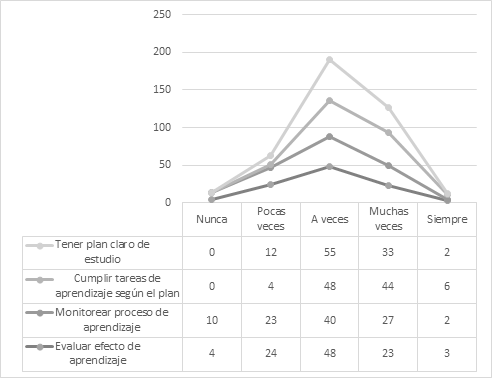
Fig. 5- Line of autonomous learning activities
2.2 Situation of carrying out personalized learning.
The survey reveals that all personalized learning activities obtained a fairly high score, close to 4.0, which is consistent with figure 6, in which the option most chosen by students is "Generally agree."
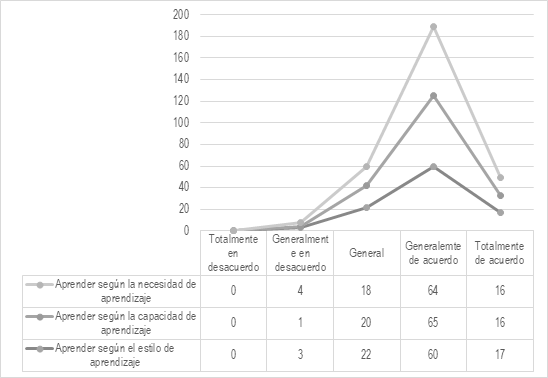
Fig. 6- Line of autonomous learning activities
2.3 Computerized teaching literacy status of teachers.
The survey shows that, regarding using ICT to carry out the Intensive Spanish subject, 60% of the teachers selected "Very willing", and 20%, "Somewhat willing" or "General", none chose "Not very willing" or "Very unwilling."
Regarding the understanding of educational computerization policies, 60% of the teachers chose "I have never heard of them", and 20% chose "I have heard of them, but I don't know them" and the other 20%, "I know little about them", none of the teachers chose "I know them a lot" and "I know them a lot."
Regarding knowledge about the integration of ICT in the subjects, Figure 7 shows that teachers agree more with the importance and need to integrate ICT in the subject, they are quite confident in the ability to use ICT and solve teaching problems, but they do not have sufficient knowledge about the integration of ICT in the subject nor do they have effective participation in the relevant training.
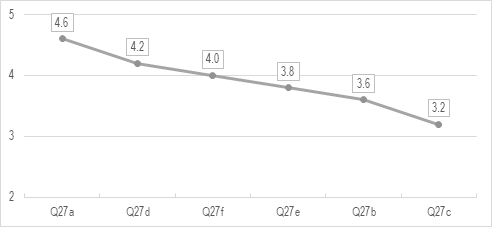
Fig. 7- Situation of knowledge of the integration of ICT and subjects
No. |
Items of knowledge situation of the integration of ICT and subjects |
Punctuation |
Q27a |
- I believe that information technology is important to improve the teaching effect, advanced technology should be integrated into teaching. |
4.6 |
Q27d |
- I believe that the use of technology can promote understanding and learning of language knowledge. |
4.2 |
Q27f |
- I can solve common problems caused by technical failures in teaching (such as multimedia cannot be projected, software cannot run, links cannot open, etc.). |
4.0 |
Q27e |
- According to the curriculum standards, teaching objectives, student characteristics and technical conditions, I find harmony in using information technology to solve teaching problems. |
3.8 |
Q27b |
- I know the knowledge of integrating technology, discipline and teaching methods. |
3.6 |
Q27c |
- I effectively participate in training in the application of information technology in teaching and achieve the combination of training and use. |
3.2 |
2.4 Situation of implementing precise teaching.
Precise teaching is a digital and intelligent teaching paradigm based on recording and analyzing data from the entire teaching and learning process, to adapt the curriculum to the needs of each student, in order to achieve individual precision and dynamic optimization of the learning outcomes (Li et al., 2023). The survey shows that the total average score of the items is 3.9, indicating that teachers have a fairly high level of accurate teaching. But the different scores of each item indicate that teachers pay more attention to the evaluation of teaching (Q30h, Q30i), followed by the teaching process in class (Q30f), and less attention to individualized teaching outside of class (Q30a, Q30e, Q30b, Q30g).
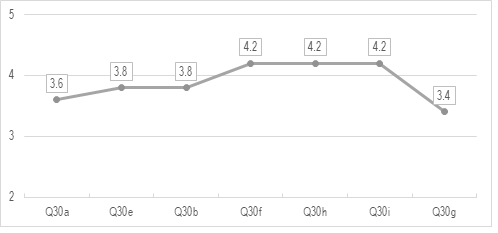
Fig. 8- Situation of implementing precise teaching
No. |
Items of implementing precise teaching |
Punctuation |
Q30a |
- I would know the students' autonomous learning situation before class. |
3.6 |
Q30e |
- I would use information technology to carry out learning tests in class to know the students' mastery. |
3.8 |
Q30b |
- I would adjust the important and difficult points of teaching in the classes at the same time according to the autonomous learning situation of the students. |
3.8 |
Q30f |
- I would adjust the teaching method at the same time according to the behavior or feedback of the students. |
4.2 |
Q30h |
- I evaluate the students' learning process in several ways. |
4.2 |
Q30i |
- I evaluate the students' learning results in several ways. |
4.2 |
Q30g |
- I would provide individual guidance to students according to their individual differences (such as study habits, hobbies, personality traits, etc.). |
3.4 |
|
Total average |
3.9 |
2.5 Situation of implementing the flipped classroom.
The survey shows that all teachers generally require students to do pre-study before class, but they mainly guide them to study paper textbooks (100%), and they also tell them to watch introductory videos to learn the knowledge of the context (80%), and few teachers indicate watching teaching videos that are combined with the subject to learn the knowledge of the subject autonomously (40%), and no teacher requires students to take specific pre-class tests.
Regarding teaching in classes, the survey shows that teachers dedicate 59.6% of their time to teaching language content and 40.4% to guiding students to practice linguistic skills.
2.6 Situation of implementing mixed teaching.
According to the survey, the average of guiding students to learn with video resources is 2.8, exactly in the various learning activities, the one with the highest score is "expanding knowledge and culture" (4.0), and lowest in learning words (2.2), texts (2.4) and grammar (2.6).
2.7 Situation of inclusion of information technology in the teaching-learning process.
The survey shows that in the preparation stage (Q33a, Q33b, Q33c) teachers have higher scores. To promote students' autonomous learning, teachers pay more attention to warning (Q33e) than monitoring students' learning process (Q33d), used ICT to collect (Q33f) and analyze (Q33g) the data of learning, but the frequency was not very high either.
In classes, teachers used ICT to carry out teaching-learning interaction (Q33h), but the frequency is not high (3.2). When presenting the language content with ICT, they had a higher score (3.8). Specifically, in classes, the media most used by teachers are texts (4.4), images (4.2) and audios (4.0), followed by videos (3.8), and the least used are animations (2.4). The most used technologies are PPT (4.6) and websites or web pages (4.2), followed by online teaching platforms (3.4), and the least used are artificial intelligence (1.4) and virtual reality (1.2).
Apart from this, in other stages outside of classes (Q33i, Q33j, Q33k, Q33l), the frequency of using ICT is also not high.
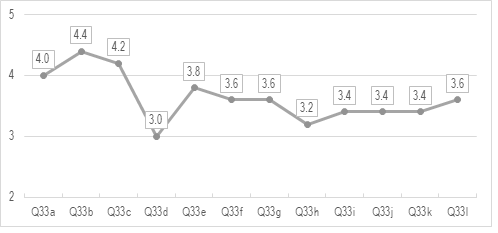
Fig. 9- Frequency of carrying out teaching activities through information technologies
No |
Items of implementing precise teaching |
Punctuation |
Q33a |
- Prepare the lesson |
4.0 |
Q33b |
- Provide learning resources to students |
4.4 |
Q33c |
- Assign learning tasks to students |
4.2 |
Q33d |
- Track the progress of students' autonomous learning |
3.0 |
Q33e |
- Remind students on time to complete autonomous learning tasks |
3.8 |
Q33f |
- Collect student learning data |
3.6 |
Q33g |
- Analyze student learning data to know learning problems |
3.6 |
Q33h |
- Carry out class interactions (such as recording attendance, selecting candidates, struggling to answer, etc.) |
3.2 |
Q33i |
- Correct students' work |
3.4 |
Q33j |
- Create a linguistic environment for students |
3.4 |
Q33k |
- Assess language knowledge and skills |
3.4 |
Q33l |
- Answer students' online questions on time |
3.6 |
|
Total average |
3.63 |
3.1 The position and role of teachers.
The survey shows that, regarding the teaching design principle of the Intensive Spanish subject, 40% of teachers chose "Teaching-oriented", 60% chose "Same emphasis on learning and teaching", and none of teachers chose "Learning Oriented".
Regarding guiding students to learn, the average score is 3.53 points, exactly in "guiding to use appropriate ICT to learn" they obtained 3.4, in "guiding to adopt appropriate learning strategies" and " guiding to adopt appropriate learning methods" they got 3.6.
3.2 The position and role of students.
The survey shows that in classes, students usually spend 53.01% of their time passively accepting the teaching of content and 46.99% in actively thinking to construct knowledge.
3.3 The position and role of teaching-learning content.
Figure 1 shows that most students have abundant digital learning resources, demonstrating that textbooks are not the only source of knowledge for students. However, through the analysis of indicator 1.4, it can be known that digital learning resources are mainly of traditional type, and there are not enough high-quality resources that match the subject, and there are still a considerable number of students who do not They have learning resources.
3.4 The role of teaching-learning media.
The survey shows that, regarding the support of ICT for students' autonomous learning and personalized learning, all scores are between 3.5 and 4.0.
The previous results reflect the following as their main limitations:
The creation of the computerized teaching-learning environment of Spanish:
The application of new ways of teaching and learning Spanish:
The transformation of the traditional teaching-learning structure of Spanish:
DISCUSSION
Some studies have shown the potential of ICT in the teaching of foreign languages to improve motivation, autonomy, access to online resources and multimedia materials, online collaboration, the development of linguistic skills, the personalization of learning, the evaluations and feedback (Antonio Cruz & Carrión Rodríguez, 2023; Imaicela Vega et al., 2023). But only with the development and supply of ICTs cannot be taken advantage of their potential to promote education, but rather integrate them into the teaching process of the subjects in a systematic and effective way, as He and Wu (2019) maintain.
The integration of ICT in subjects lies not only in the reform of content, methods and teaching aids, but in the transformation of the traditional teaching and learning structure (He & Wu, 2019).
In China, due to the curricular stress of the Intensive Spanish subject, most universities take teachers as the center of the classes, which can favor the fulfillment of didactic objectives and benefit the systematic teaching of language knowledge. Spanish, but has a disadvantage in the development of student autonomy and the cultivation of linguistic skills, this can also be reflected in the results shown above.
In order to transform the traditional didactic structure, as indicated in the studies by Zhu (2016), He and Wu (2019) and Hernández-Torres (2022), the fundamental and indispensable thing is a good computerized environment, which can benefit students. teachers the implementation of new ways of teaching, such as the flipped classroom, blended teaching, etc., and that can also support the application of new learning methods for students, such as personalized learning, collaborative learning, etc.
However, a good informed environment does not necessarily mean a deep integration of ICT, which also has intensive and significant use by teachers and students. As indicated by Lomos et al. (2023), the availability of infrastructure is necessary, but it has to be complemented with empowered schools and educational communities, so we must focus more on internal barriers instead of external ones, that is, the elements related to the integration of ICT in the subjects of the educational participants, which coincides with the opinions of Fella and Rabéa (2021) and Hernández-Torres (2022).
This study used empirical methods to diagnose the current situation of the integration of ICT in the subject of Intensive Spanish at Linyi University in China, the results of which demonstrate that in the process of teaching and learning of this subject there are still insufficiencies in the integration of ICT, especially in internal aspects.
The results on the implementation of new ways of teaching and learning partially coincide with the study by Zhu (2016), where he indicates that teachers already have the ability to use ICT to optimize teaching in the classroom, but they lack the capacity to help students carry out exchanges and cooperation, inquiry and knowledge construction, autonomous learning and individualized development.
The research presented shows that students have a fairly high level of personalized learning, and teachers have a fairly high level of accurate classroom teaching, but do not pay much attention to individual guidance. Furthermore, deficiencies in autonomous learning, computer literacy, and the intensity of ICT use still persist, which is consistent with the results of Zhu's (2016) study.
Based on what was analyzed above, the need and direction of improving the integration of ICT in the subject of Intensive Spanish at Linyi University is justified; it can be based on developing the computerized infrastructure, that is, the external aspects, we must reflect more about improving the digital competence of teachers and students by combining methods and activities to realize the transformation of the traditional teaching-learning structure. In this sense, the research provides Linyi University with specific aspects related to the insufficiencies of the integration of ICT in the Intensive Spanish subject and that improves the quality of teaching and learning of Spanish.
Although this study provides innovative ideas on the theoretical and practical aspects that affect the integration of ICT in the Intensive Spanish subject, its limitations must be recognized. First, the generalizability of the findings is limited by focusing only on data from Linyi University, therefore, it is recommended that the following investigations include data from different universities to ensure broader applicability. Additionally, the study has a Chinese property because it is based on a theory more accepted in China about the integration of ICT in subjects, so future studies can be carried out from approaches from other countries for a more international characterization.
REFERENCES
Antonio Cruz, C. L., & Carrión Rodríguez, J. D. (2023). Uso de las Tecnologías de la Información y la Comunicación (TIC) en la enseñanza-aprendizaje del inglés, una revisión de literatura. Espacio I+ D, Innovación más desarrollo, 12(33), 31-46. https://doi.org/10.31644/IMASD.33.2023.a02
Cao, W., & Zhang, B. (2019). An Empirical Study on the Ecological Reconstruction of Spanish Intensive Reading Classes by CRS. Journal of Yulin University, 29(4), 50-54. https://www.cnki.net/KCMS/detail/detail.aspx?dbcode=CJFD&dbname=CJFDLAST2019&filename=YLGD201904013&uniplatform=OVERSEA&v=nMX34nT6dgxaNu3kAG2mZ4yodaGLQ2Vl2b4h_RGnZk1c4IklslwGxgh0mVZ2-a4y
Centro de Innovación en Educación Superior de la UNESCO, & Instituto de Investigación de Educación de la Universidad de Tsinghua. (2022). Informe de investigación sobre la transformación digital de la enseñanza en la educación superior. UNESCO. https://cn.ichei.org/Uploads/Download/2022-05-06/6274833408a85.pdf
Fella, A., & Rabéa, B. L. (2021). La contribución de las TIC a la mejora del proceso de enseñanza-aprendizaje de lenguas extranjeras: Aproximaciones teóricas y estrategias didácticas. Atlante: Cuadernos de Educación y Desarrollo, 13(6), 122-135. https://doi.org/10.51896/atlante/LIED6325
Guan, R. (2020). Exploración y práctica de métodos de enseñanza en línea bajo la nueva epidemia de neumonía corona: tomando como ejemplo el curso de pregrado "Español intermedio". Journal of Science and Education, (16), 181, 182, 188. https://doi.org/10.16871/j.cnki.kjwha.2020.06.080
Han, F. (2020). Exploración del modo de enseñanza basado en los antecedentes de la enseñanza en línea bajo la epidemia: tomando como ejemplo un curso intensivo de lectura en español. Journal of News Research, 11(10), 222-223. https://www.cnki.net/KCMS/detail/detail.aspx?dbcode=CJFD&dbname=CJFDLAST2020&filename=XWDK202010126&uniplatform=OVERSEA&v=SSiLaRBB7h4H4b-zZCV1EqRvAAaQLZ5p79J0gymY4h8qj-UuaSwcTaY3hZSnNWmx
He, K., & Wu, J. (2019). Integración de la tecnología de la información en las asignaturas: teoría y práctica de la integración profunda de la tecnología de la información en las asignaturas. Higher Education Press.
Hernández-Torres, A. (2022). La enseñanza de Español como Lengua Extranjera en ambientes híbridos de aprendizaje. En C. Soler Montes, R. Díaz-Bravo, & V. Colomer I Domínguez (Eds.), Avances investigadores y pedagógicos sobre la enseñanza del español: Aportes desde el contexto universitario británico (pp. 173-189). Research-publishing.net. https://doi.org/10.14705/rpnet.2022.58.1405
IIEP de Unesco. (2023). Tecnologías de la información y la comunicación (TICs) en la educación. Unesco IIEP Learning Portal. https://learningportal.iiep.unesco.org/es/fichas-praticas/mejorar-el-aprendizaje/tecnologias-de-la-informacion-y-la-comunicacion-tics-en-la
Imaicela Vega, R. E., Conza Chuquirima, J. H., Cango Alejandro, M. C., Conza Chuquirima, L. Á., & Chuquimarca, K. de la N. J. (2023). La Integración de las TIC en la Enseñanza de la Literatura: Impacto en el Aprendizaje y la motivación de los Estudiantes. Ciencia Latina Revista Científica Multidisciplinar, 7(2), 5022-5036. https://doi.org/10.37811/cl_rcm.v7i2.5662
Li, B., Zhang, Y., & Zhou W. (2023). The Development of Precision Teaching Model under the Background of Big Data. People's Education, 2023(09), 27-32. https://oversea.cnki.net/KCMS/detail/detail.aspx?dbcode=CJFD&dbname=CJFDLAST2023&filename=RMJY202309007&uniplatform=OVERSEA&v=xJ-yA7snb-KvYRfl9e4yUclcoZcKZy-t8dbJ9p4cSnO1wxDDin68V_XwvRrngGYD
Lomos, C., Luyten, J. W., & Tieck, S. (2023). Implementing ICT in classroom practice: What else matters besides the ICT infrastructure? Large-Scale Assessments in Education, 11(1), 1-28. https://doi.org/10.1186/s40536-022-00144-6
Ministerio de Educación de China. (2022). Acelerar el desarrollo de alta calidad de la educación. Conferencia Nacional de Trabajo Educativo de 2022. http://www.moe.gov.cn/jyb_xwfb/gzdt_gzdt/moe_1485/202201/t20220117_594937.html
Subcomité Directivo Nacional de Enseñanza de Español en Institutos y Universidades del Ministerio de Educación de China. (2022). Guía didáctica para carrera de español de universidades. En Comité Directivo Nacional de la Enseñanza de Lenguas Extranjeras en Institutos y Universidades del Ministerio de Educación de China. Guía didáctica para carreras de lengua y literatura extranjeras de universidades (86-107). Foreign Language Teaching and Research Press. https://www.fltrp.com/c/2022-10-18/514160.shtml
Zhu, Z. (2016). New Developments of Smarter Education:From Flipped Classroom to Smart Classroom and Smart Learning Space. Open Education Research, 22(1), 18-26,49. https://www.cnki.net/KCMS/detail/detail.aspx?dbcode=CJFD&dbname=CJFDLAST2016&filename=JFJJ201601003&uniplatform=OVERSEA&v=CCByvXHWcfXQVXIO_VM3HIU7oVyJimwapZwmvb8AwR2c3btFIuf_j27Kaw2V_pDZ
Conflict of interests:
The authors declare not to have any interest conflicts.
Authors' contribution:
The authors participated in the design and writing of the article, in the search and analysis of the information contained in the consulted bibliography.
![]()
This work is licensed under a Creative Commons Attribution- NonCommercial 4.0
International License